Key takeaways:
- Independent publishing allows authors to maintain creative control and establishes a supportive community.
- Key benefits include flexibility in design, higher royalties, and immediate audience reach.
- Challenges involve marketing, personal accountability, and technical formatting issues.
- Essential steps for success include understanding the audience, investing in professional editing, and selecting the right publishing platform.
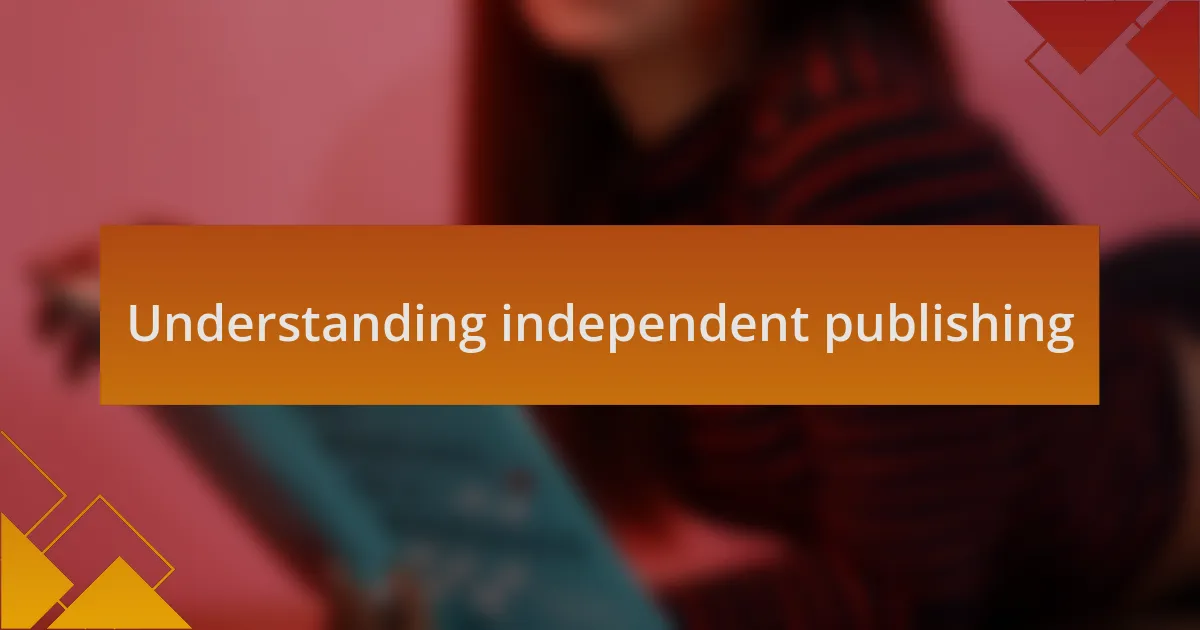
Understanding independent publishing
Independent publishing, often seen as a liberating alternative to traditional routes, offers authors the chance to maintain control over their work. I remember the thrill of realizing that I could shape not only my words but my entire brand. Have you ever felt trapped by someone else’s vision for your writing? That liberation is what draws many to independent publishing.
For me, understanding the nuances of this industry was crucial. Independent publishing encompasses a wide array of platforms ranging from print-on-demand to e-books, each with unique challenges and rewards. Navigating this landscape can feel overwhelming, but what’s more important is knowing there’s a community of like-minded authors sharing resources and support. Don’t you think having that network can make all the difference?
When I first ventured into this realm, the focus on marketing and self-promotion caught me by surprise. I wish I had known sooner that being an author also means being an entrepreneur. It’s not just about writing a great book; it’s about knowing your audience and how to reach them. Have you thought about how you would promote your own work? The excitement of readers discovering your story is truly worth the effort.
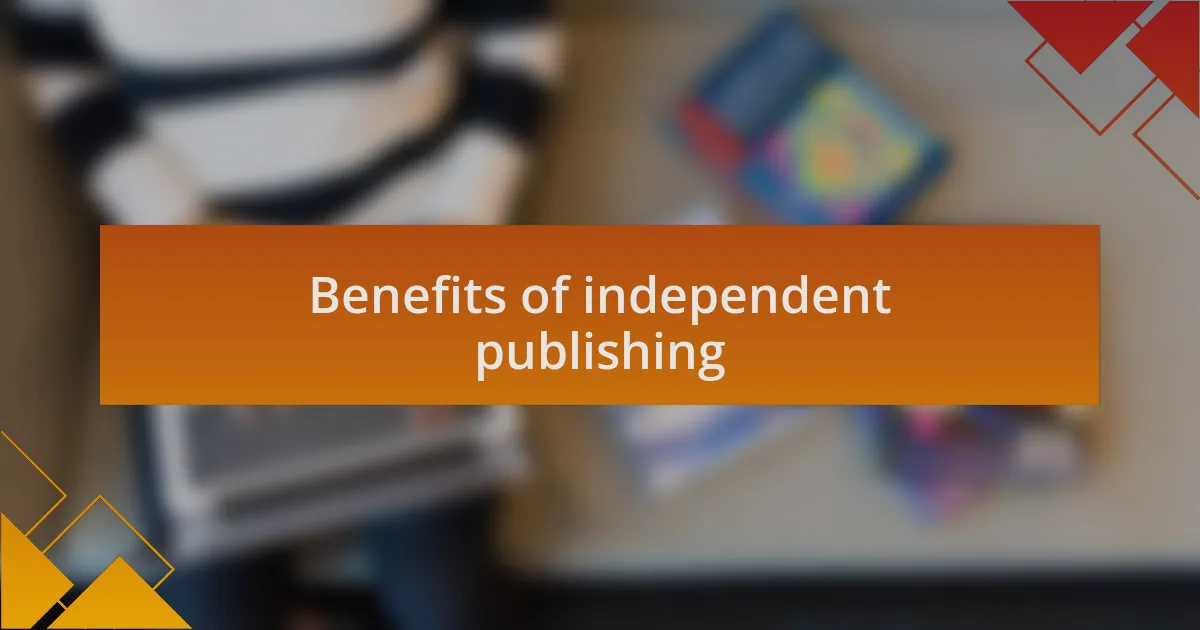
Benefits of independent publishing
One of the standout benefits of independent publishing is the flexibility it offers. I recall the time I collaborated with a talented graphic designer to create a cover that resonated with my vision. That freedom to express my ideas, rather than conforming to a publisher’s template, empowered me as an author. Have you ever envisioned a cover that perfectly encapsulates your story? That creative liberty is one of the greatest perks of this pathway.
Additionally, I’ve found that independent publishing can lead to higher royalties compared to traditional publishing. When I first saw the financial breakdown of my book sales, I was pleasantly surprised to realize that I kept a much larger share of the profits. Understanding this aspect reshaped my perspective; isn’t it fulfilling to earn what you deserve for your hard work?
Finally, the immediacy of reaching your audience through independent publishing is genuinely exhilarating. When I launched my book, I didn’t have to wait months for it to hit the shelves. Instead, I hit ‘publish’, spread the word through social media, and saw instant reactions. Can you imagine the thrill of receiving feedback on your work in real time? That dynamic connection with readers makes all the effort worthwhile.
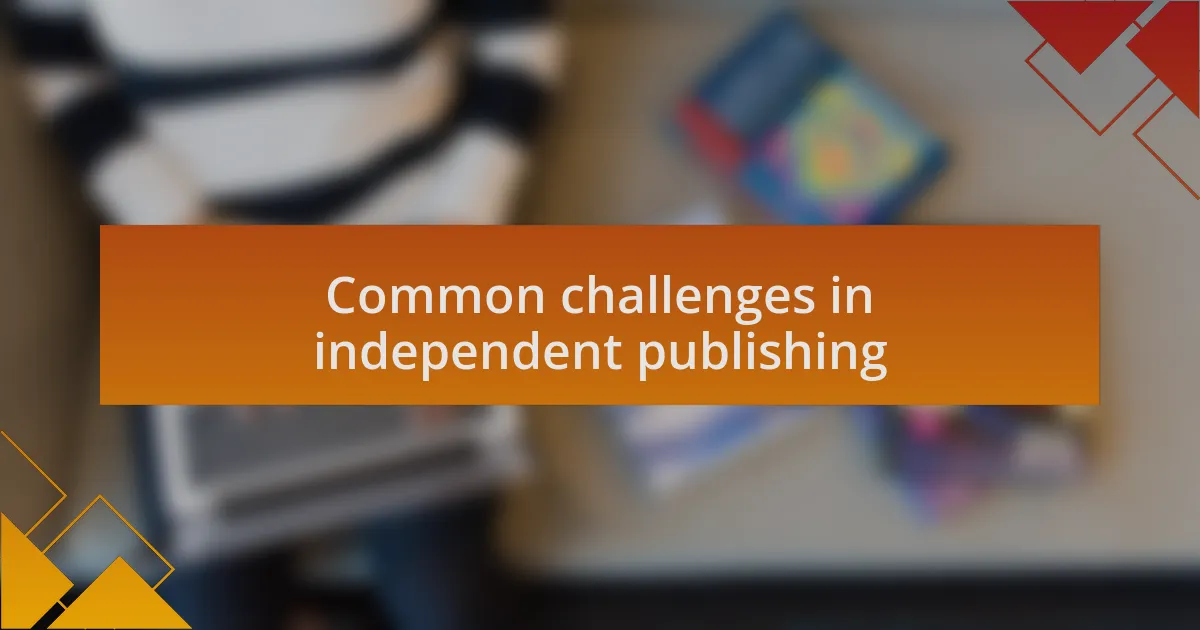
Common challenges in independent publishing
One significant challenge I faced was navigating the marketing landscape. After publishing my first book, I quickly realized that getting noticed in a sea of content requires more than just hitting publish. It felt overwhelming at times, as I found myself juggling social media, email lists, and promotional strategies all on my own. Have you ever wondered how some authors seem to make it look effortless? The truth is, it often comes down to trial and error, and learning, sometimes the hard way.
Another hurdle I encountered was the need for personal accountability. In traditional publishing, deadlines and guidelines can anchor you. However, as an independent author, I quickly learned that it was up to me to stay on track. I vividly remember the days I’d get distracted or procrastinate, only to realize that my goals were slipping away. Isn’t it easy to lose momentum when no one is holding you accountable? Finding a routine and setting my own deadlines became essential.
Lastly, handling the technical aspects of publishing can be daunting. The formatting required for eBooks versus print versions felt like learning a new language. Once, I spent hours on a single page, frustrated by spacing issues and layout challenges. Have you ever found yourself stuck trying to figure out software when you just want to focus on your writing? It’s a common pain point, and often, I wished I had sought help from someone who had already conquered these technical challenges.
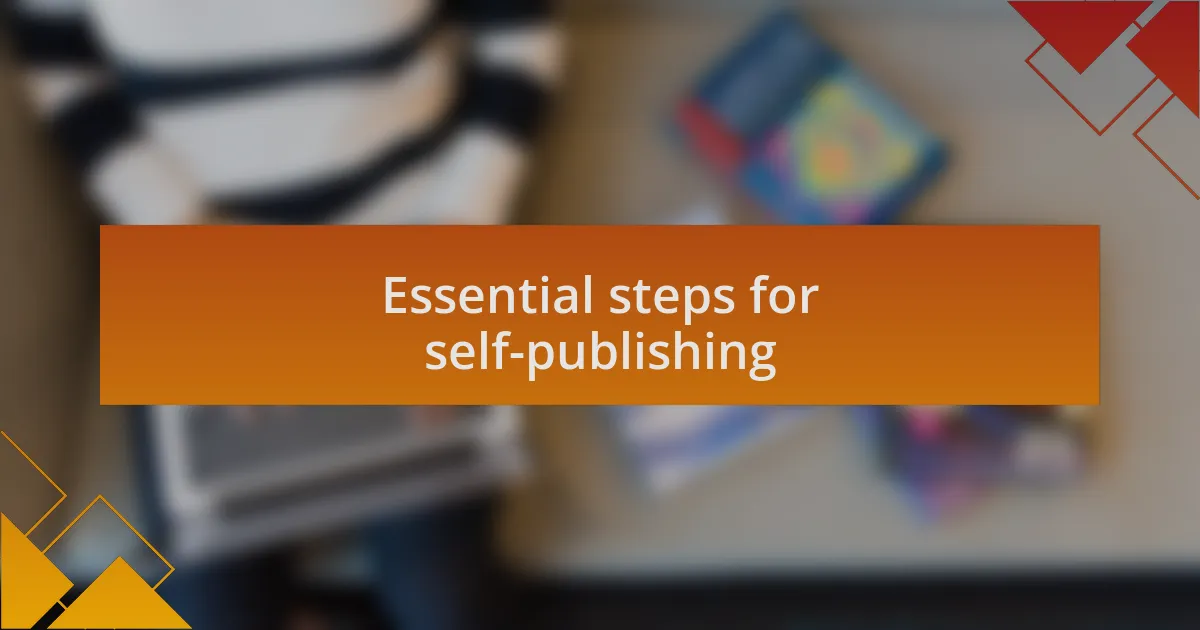
Essential steps for self-publishing
The first essential step I discovered in self-publishing was understanding my target audience. Initially, I assumed my work would appeal to everyone, but I quickly realized that defining a niche is vital. By refining my focus, I was able to tailor my marketing strategies, resulting in a more engaged reader base. Have you ever tried to please everyone only to end up reaching no one?
Next, I can’t emphasize enough the importance of professional editing. After finalizing my manuscript, I thought it was ready to go—how wrong I was! I remember feeling an initial pang of resistance to investing in editing, but seeing the polished version afterward was incredibly rewarding. It’s like watching a rough diamond transform into something beautiful. Isn’t it worth that extra effort when it can make or break your book’s success?
Lastly, choosing the right platform for publishing was a pivotal point in my journey. I explored various options—each with its pros and cons—before settling on one that best matched my goals. I remember the late nights spent comparing publishing houses and self-publishing platforms, feeling both excited and anxious. What can I say? That moment of hitting ‘publish’ felt euphoric, knowing I had carved my own path. Have you taken the time to research which platform aligns with your vision? It truly impacts your overall experience.
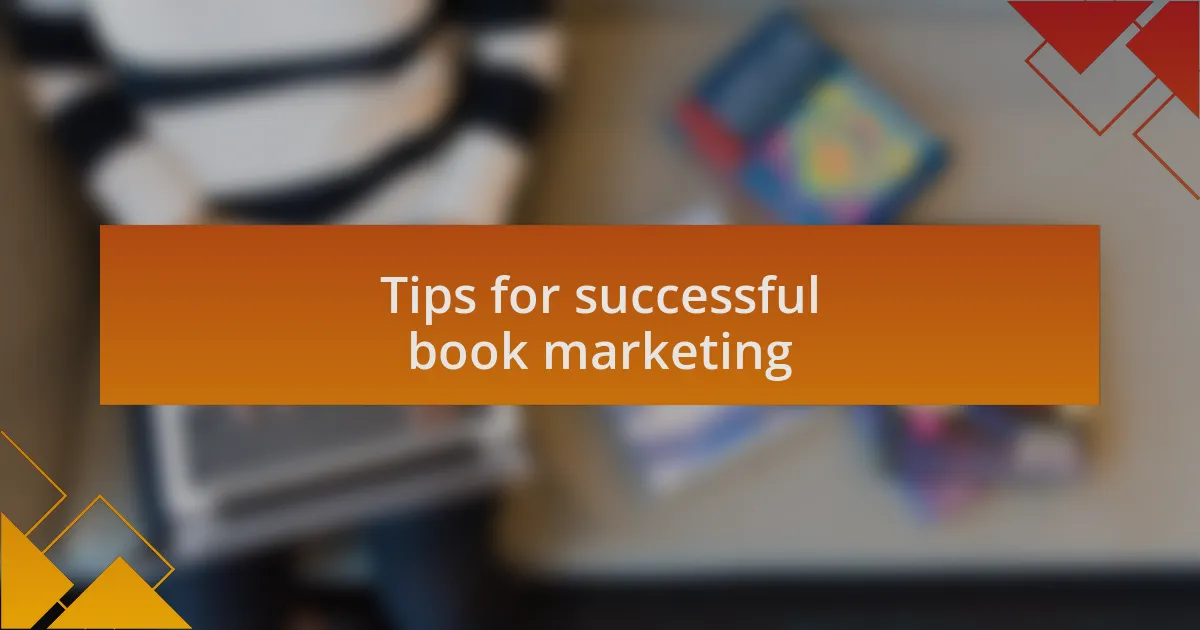
Tips for successful book marketing
One of the most effective tips I found for successful book marketing is leveraging social media. When I first started promoting my book, I underestimated the power of platforms like Instagram and Twitter. A few carefully crafted posts featuring behind-the-scenes glimpses of my writing process not only connected me with potential readers but also built a community around my work. Have you tried sharing your journey online? It can transform your marketing efforts from a solitary endeavor into a vibrant conversation.
Creating a captivating author website is another essential piece of the marketing puzzle. Initially, I opted for a simple blog, but as I delved deeper into marketing strategies, I realized the value of a well-designed site. It became my home base—showcasing my book, collecting email subscribers, and even sharing free content that resonated with my audience. Wouldn’t it be great if your website could serve as a hub that actively engages readers and drives sales? I found that a personal touch on my site made all the difference.
Lastly, don’t shy away from seeking out partnerships and collaborations. I recall reaching out to a local bookstore for a book signing event and was pleasantly surprised by their enthusiasm. It turned into not just a successful event, but also a lasting relationship that benefited both of us. Building connections with fellow authors, bloggers, or influencers in your genre can amplify your reach significantly. Have you considered how a collaboration could elevate your marketing game? Sometimes, teamwork truly does make the dream work.